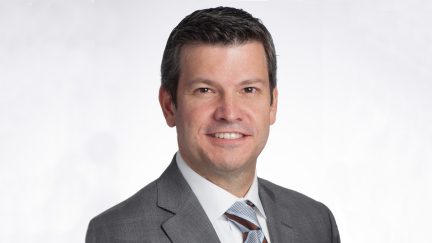For more stories like this, sign up for the PLANSPONSOR NEWSDash daily newsletter.
OCIOs Can Improve Pension Plan Funding
Plan sponsors that are considering hiring an outsourced chief investment officer should examine its track record and operational qualifications.
More defined benefit (DB) plans are using outsourced chief investment officers (OCIOs) to improve their performance and funding, sources say.
In fact, PLANSPONSOR’s sister publication Chief Investment Officer found in its 2020 OCIO Survey that the main reason why institutional investors hire OCIOs is a quest for absolute return, cited by 66% of respondents. Fifty-nine percent of OCIO clients farm out all of their portfolios, whereas 21% outsourced less than 25% of their holdings, the survey found.
Nearly two-thirds of survey respondents ceded total control of investment management, hiring their OCIOs as 3(38) fiduciaries.
It is generally larger firms that turn to OCIOs, says Jim Scheinberg, founder and chief investment officer (CIO) at North Pier Search Consulting, which has been helping DB plans and other institutional investors select and monitor OCIOs for the past nine years.
“OCIOs are similar to other consulting relationships pension plans enter into,” Scheinberg says. “In the case of OCIOs, they are responsible for investment selection and asset allocation but, if they are a 3(38) fiduciary, which most are, they layer in discretionary authority for hiring and firing managers. Depending on the pension plan’s investment policy statement [IPS], they have narrow to wide authority to maneuver the portfolio to affect the asset allocation of funds. Many OCIOs will take administrative authority, as well, to execute manager contracts.”
OCIOs now oversee more than $2 trillion in institutional assets in the U.S., up from $600 million in 2014, Scheinberg says. “They are very prevalent and growing meaningfully.”
DB plan sponsors can derive multiple benefits from working with an OCIO, most of them “predominantly being time-related,” he says. “The ability for an OCIO to execute on a prudent decision is sped up to the point that they can do it immediately upon determining it is in the client’s best interest, whereas a committee can take three to nine months to reach a decision, and that is if its members are in full agreement initially. Be it asset classes or style mandates, committees frequently will mull the decision over several quarters, which mutes their efficacy and, potentially, results in costly decisions for the pension plan.
“OCIOs, on the other hand,” he continues, “can maneuver portfolios tactically when they see market displacement or areas of increasing risk that should be underweighted or avoided altogether. If a committee is slowly evaluating such matters, the windows close very quickly.”
OCIOs are also very effective at rebalancing portfolios, as proven last March when “they were aggressively rebalancing out of high-quality fixed income back into equities and credit,” Scheinberg says. “If you missed this by a month or a quarter or two, you would have missed the 25% uptick in the market.”
And unlike DB plan committees, OCIOs know when to invest in fund managers, even if their performance currently appears to be ordinary, Scheinberg says. “Even when they look to be mediocre, that might be the precise time to hire them,” he says. “It has become a fascinating market for OCIOs these days.”
Considerations When Hiring an OCIO
Scheinberg says the first thing a sponsor should consider when assessing whether or not to hire an OCIO is its operational qualifications or readiness.
“An organization should be well built and be established from a technical and personnel standpoint,” he says. “Its decisionmaking process should be established, including a fair amount of due diligence, especially with new entrants. Of course, we think performance is important. It must have a track record showing that it is good at running money. After all, you are giving them the discretion to run your entire portfolio. This can be challenging in today’s marketplace because there are no standards for the publishing or disclosure of track records.”
North Pier is one of the few consultants that specializes in assessing OCIOs, conducting quantitative analytics based on 40 to 50 research calls with the OCIO community every quarter. “There are now more than 30 organizations or individual practitioners that in one form or another help sponsors search for an OCIO,” Scheinberg says. “Sponsors have also become much more professional about hiring OCIOs, conducting rigorous RFPs [requests for proposals].”
Russell Investments released a white paper, titled “OCIO: Thinking Like a Fiduciary,” with sample questions plan sponsors might ask in an RFP. The firm suggests asking OCIOs to “describe the functions your firm typically assumes in an OCIO relationship and the resources you assign to manage each function.”
Another sample prompt might be, “Describe your firm’s overall philosophy as it pertains to plan management, including strategic asset allocation and governance,” or “Provide an example of how this philosophy has been put into practice across your client base, including a historical track record.”
In conclusion, Russell Investments says, “Outsourcing should only be considered when a better outcome—i.e., better holistic investment outcomes, risk mitigation, lower fees and/or reduced demands on internal resources—is more likely achievable under the OCIO model than under an internally managed approach.”







